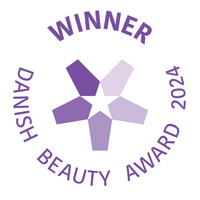Important News: EU Introduces New Rules for Microplastics in Cosmetics

Microplastics are tiny plastic particles measuring less than 5 mm in any dimension. These nearly invisible fragments are found in our environment – from the water to the air we breathe, and even in the food we consume.
Microplastics come from various sources, including degraded plastic bottles, wear and tear from car tires, and microfibers released from synthetic textiles when we wash our clothes. These particles can also be found in everyday products such as soap, toothpaste, and, yes, even in nail products.
Why is microplastic a problem?
Because microplastics don't just disappear. They accumulate in nature and can harm animals and plants. Due to their microscopic size, they can end up in our drinking water and in the food we eat. This raises concerns about their potential impact on human health and the environment.
What does this mean for cosmetics?
After extensive research by the European Chemicals Agency, it has become clear that microplastics should be taken seriously. The EU has therefore introduced new regulations to limit the use of microplastics in various products, particularly in cosmetics and cleaning agents. As of October 17, 2023, cosmetic products containing more than 0.01% plastic particles smaller than 5 mm will be banned. However, there are some important details to note:
Loose glitter
As of October 17, 2023, the marketing of non-biodegradable loose glitter will be prohibited. However, if you've already purchased products with non-biodegradable loose glitter before this date, it's still legal to use them. They just can't be imported into EU countries or produced within the EU.
Glitter in nail products
Nail products already mixed with non-biodegradable glitter have a limited exception under the new rules and can be sold until 2035. So, you can still buy and use nail products already mixed with non-biodegradable glitter for many years to come.
Glitter in The Gel Collection 21free products
Since we, with our own brand The Gel Collection, have made it our mission to make responsible choices regarding materials and ingredients, we long ago decided that we do not want to use microplastics. Therefore, microplastics are already part of our blacklist of 21 types of harmful chemicals that we do not want in our gel products. You can continue using The Gel Collection 21free products with peace of mind. See our entire blacklist and 21free list here.
Glitter in general – so, can you never use glitter again?
Don't worry. There is also good news: Not all forms of microplastics are necessarily harmful or banned. Going forward, glitter will still be legal under the following conditions:
- That it is biodegradable according to legal definitions.
- That its chemical structure does not contain carbon atoms.
- That it measures under 5 mm in any dimension.
These exceptions mean that companies and brands can still use certain types of glitter, as long as they meet these criteria. Just like we do with The Gel Collection products. Going forward, it will only be the types of glitter that pose less risk to nature, animals, and humans. Glitter itself is not being banned as long as it complies with the rules. Companies are just being forced to make more responsible material choices moving forward.
The Future of Microplastics
In the coming years, we expect more regulations and initiatives to be introduced to minimize the impact of microplastics on the environment. This means that both companies and consumers must become more aware of their product choices and their long-term effects on our planet. We will, of course, keep you updated on this important development and ensure that our products are always in compliance with the latest regulations and recommendations.


